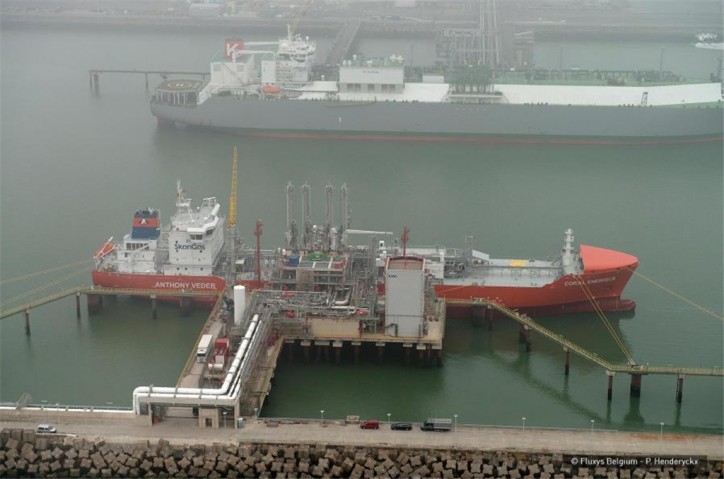The Zeebrugge LNG Terminal has recently performed its first loadings of the Coral EnergICE. This newly built ice class vessel will be making regular calls for delivering small-scale LNG to Scandinavian ports.

The Coral EnergICE is designed to operate in the sub-zero temperatures of the Baltic Sea during all weather conditions. The vessel has a loading capacity of 18,000 m³ and is currently assigned to make year-round small-scale LNG deliveries to northern ports in Sweden and Finland.
Increasing demand for LNG as fuel in transport
Due to its favourable emission profile, demand for LNG as an alternative fuel for ships and long-haulage trucks continues to rise. As it goes, switching to LNG eliminates nearly all emissions of sulphur (SOx) and particulate matter, cuts carbon emissions up to 25% and NOx emissions by more than 80%. LNG is also increasingly used to supply cleaner energy to industrial sites that are not connected to a gas grid.
Today approximately 100 ships are using LNG as a fuel in Europe and their number is set to double by 2020 when more stringent sulphur emission standards come into force. The development of new infrastructure is in full swing to support this growth of the small-scale LNG market.
Zeebrugge LNG terminal: full range of small-scale LNG options
Fluxys Belgium is a driving force in accommodating the uptake of the small-scale LNG market. The Zeebrugge LNG terminal has been offering LNG trailer loading services since 2010. Small LNG vessels can load at the terminal since 2010 as well and the facility’s recently built second jetty is specially designed for loading also small LNG bunkering vessels. The latter supply LNG to LNG-fuelled ships or small-scale LNG storages. Parent company Fluxys is partner in such a bunkering vessel which has Zeebrugge as its home port. Recently Fluxys also started facilitating LNG bunkering in the port of Antwerp.
Source: Zeebrugge LNG Terminal